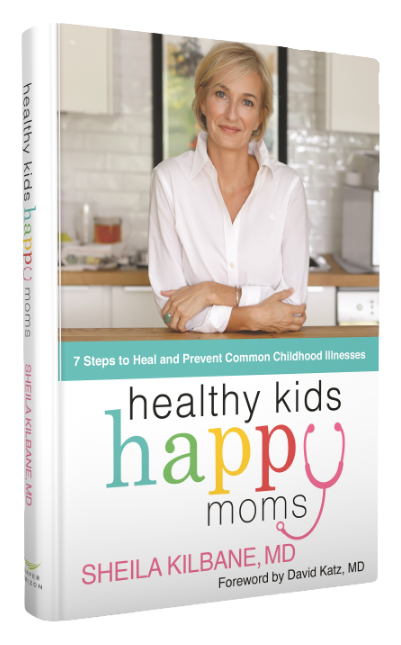This is Part One of a two-part series.
One of the first things I do with a new patient is to review the family history for genetic disorders. Knowing what illnesses are present in a child’s parents and grandparents can give me a window into a child’s symptoms, but their genetics are just part of what I consider before prescribing a treatment protocol.
Assessing a family medical history includes reviewing distant heritage and ethnic tendencies toward certain diseases, which can also provide significant information. For instance, celiac disease is more prevalent in people of Northern European descent, specifically Irish, Scottish, and English. Sickle cell anemia is another good example, it is more prevalent in people of African, Central and South America, Middle Eastern, Asian, Indian, and Mediterranean descent.
Genetics and Epigenetics
The outdated way of looking at genetics says that our genes are fixed and whatever diseases our parents or grandparents had, we will also likely have.
For example, if your father died of a heart attack at forty-five, there’s a good chance you will have a heart attack at forty-five. Looking through an integrative medical lens and taking into account an emerging field of research called epigenetics, we now know that our environment—including things such as food, stress, and environmental toxins—can influence our individual genetic expression.

Epigenetics explained
Epigenetics shows us that certain things, such as heart disease, are not set in stone. Rather, it is the interaction of our DNA (genetic makeup) with all aspects of our environment, that impacts our health.
One good example is green leafy vegetables. Research has shown that a component of green leafy vegetables (methylators), can turn off genes that we don’t necessarily want to be turned on.
The researchers took pregnant mice that were overweight, yellow, and diabetic. They fed the mice methylators during their pregnancy and the babies came out brown, normal weight, and non-diabetic. 1 2 3
I’ll never forget when Chris Magryta, M.D., my friend and the brilliant integrative pediatrician told me about this research. It’s drop-your-jaw, fall-off-your-chair kind of info for us doctors. To be able to change the genetic expression of the offspring was just remarkable. Epigenetics gives us a HUGE bag of hope for all children. We can start where we are and make great headway.
Using Epigenetics in Pediatrics
I take epigenetics into account with every child I am seeing, even those with underlying genetic changes. For example, a child with Down syndrome has an extra copy of the 21st chromosome. This mutation is fixed and will result in certain cognitive and physical changes. The anatomy of their ear canals, Eustachian tubes, nasal passages, palate, and back of the mouth may be smaller than that of a child who does not have trisomy 21. This smaller anatomy puts them at a higher risk for issues such as recurrent ear infections and sleep apnea.
Epigenetics taught me to look at children’s illnesses and inflammation in the context of their environment and not assume simply because they may have different anatomy from other children, that their inflammatory issues and illnesses were set in stone.
Case Study: Marcus, with Down Syndrome and Autism
Symptoms: Recurrent ear and sinus infections, sleep apnea, constipation.
Marcus was a fabulous young boy with Down syndrome and autism. His constellation of symptoms was extremely complicated, but his mother turned his health around, just by listening to a talk I gave at our local children’s library. I distinctly remembered his mother, because she’d asked great questions during the talk. I thought, Wow—this mother gets it!
Marcus’ case shows one aspect of genetics that is fixed. He has an extra 21st chromosome, and green leafy vegetables will not change that, however, the constellation of inflammatory symptoms he was struggling with shifted with nutritional changes and some targeted supplements.
Marcus had nearly every one of the common childhood inflammatory illnesses that I specialize in addressing with my Healthy Kids, Happy Moms program:
- Six sets of ear tubes for recurrent ear infections
- Sinus surgery for recurrent sinus infections
- Sleep apnea led to surgeries to remove his tonsils and adenoids, as well as having part of the base of his tongue resected. These procedures helped to open his airways, so he could get enough oxygen while sleeping.
- Severe constipation
- Eczema had been treated with countless rounds of antibiotics. In fact, he had been on an antibiotic every single month.
After the library talk, Marcus’s mother took him off dairy and gluten, started a probiotic, increased his omega-3 fats with fish oil, and started a vitamin D supplement. His lifelong constipation resolved fairly quickly, and his nasal congestion improved somewhat. However, we still had some work to do, because although the ear infections slowed, he was still requiring antibiotics every few months.
The Power of Epigenetics in Marcus’ Case
His mother and I decided to do some IgG food sensitivity testing (to be covered in another blog post). I don’t order this test often, but in situations like Marcus’s, I have come to find it helpful. Many foods came up positive on his test, including gluten and dairy. Mom felt confident she could remove the additional foods from his diet, and since she loved to cook, she proceeded with shifting his diet yet again, while keeping him off gluten and dairy.
Normally, we remove these foods for about three to six months and then add them back into the diet. However, Marcus was doing so well with these foods out of his diet that his mother decided to keep them out for an entire year. She also decided to take all grains out of his diet.
Results After One Year on the “Healthy Kids, Happy Moms” Program
One year after being on this anti-inflammatory diet, Marcus’ mom exclaimed, “He’s never been better!” It was the first time in his life that he went an entire year without a single antibiotic, including the entire school year.
Marcus did continue to experience some mild nasal congestion, but his parents controlled it with a salt-water nasal rinse called a neti pot. Marcus’s mother had taught him how to do the rinse himself.
In addition to the improvements in his physical health, Marcus was also significantly less hyperactive and less aggressive. Previously, they’d tried a stimulant medication for the hyperactivity, but it didn’t help. He was still on the autism spectrum but he was much calmer.
Furthermore, the ear tube fell out of his right ear (the one from his sixth set), and his ENT doctor thought for sure Marcus’s ear infections would return. They never did.

Marcus is a testament to the power of nutrition. Changing your child’s diet can be a tremendous amount of work, but the effort is worth it in the end. Once the child’s system is back in balance, you typically don’t have to be as strict with the diet, but that depends on the child and how sensitive his or her body is.
What the Integrative Approach Offers that Conventional Medicine Overlooks
Our conventional medical system trained me to look at Marcus in parts—that sleep apnea is separate from constipation, which is separate from recurrent ear infections, eczema, and hyperactivity. Integrative medicine taught me that all of these are related and worsened by inflammation, and once we figured out the inflammatory triggers, we could begin to decrease that overall body inflammation.
As we decreases his excessive systemic inflammation, some of Marcus’ chronic congestion and mucous build-up improved. This allowed his Eustachian tubes to drain more effectively, potentially lessening his recurrent ear infections. Air could also pass through his nasal passages more easily, possibly lessening recurrent sinus infections, his gut inflammation lessened, improving his constipation and eczema, and with less inflammation and better nutrient absorption, his immune system could start functioning more efficiently. The improved function of all of his systems kept him healthy and off of the previous monthly rounds of antibiotics.
One system is not superior to the other—they simply have different perspectives and scopes. Each system has its place. Conventional medicine, better sanitation, and improved nutrition are the collective reasons our children are far more likely to live through childhood now versus a hundred years ago. It’s also the reason women typically survive childbirth and why we survive inflamed appendices, childhood kidney infections, and other formerly fatal ailments.
Stick With the Program
As you can see from Marcus’s story, this transformation doesn’t happen overnight. We slowly and methodically work to rebalance the overriding inflammation in these kids. That’s what we’ll explore in Part Two of this series on Genetics and Epigenetics.
For more information on the types of supplements we used with Marcus, download my updated Integrative Supplement Guide. My online course is a terrific support to families undergoing a health transformation. My Eczema Jump Start Guide has helped parents all over the globe since few pediatricians are trained in integrative medicine.

An illustration of how the five main triggers of inflammation accumulate in the body
References:
- Dolinoy, D. J, et al.. “Epigenetic Gene Regulation: Linking Early Developmental Environment to Adult Disease.” Reproductive Toxicology 23, no. 3 (April 2007): 297–307. https://doi.org/10.1016/j.reprotox.2006.08.012.
- Jirtle, Randy L., et al. “Environmental Epigenomics and Disease Susceptibility.” Nature Reviews Genetics 8, no. 4 (April 2007): 253–62. https://doi.org/10.1038/nrg2045.
- Waterland, Robert A., and Randy L. Jirtle. “Transposable Elements: Targets for Early Nutritional Effects on Epigenetic Gene Regulation.” Molecular and Cellular Biology 23, no. 15 (August 1, 2003): 5293–5300. https://doi.org/10.1128/MCB.23.15.5293-5300.2003.








